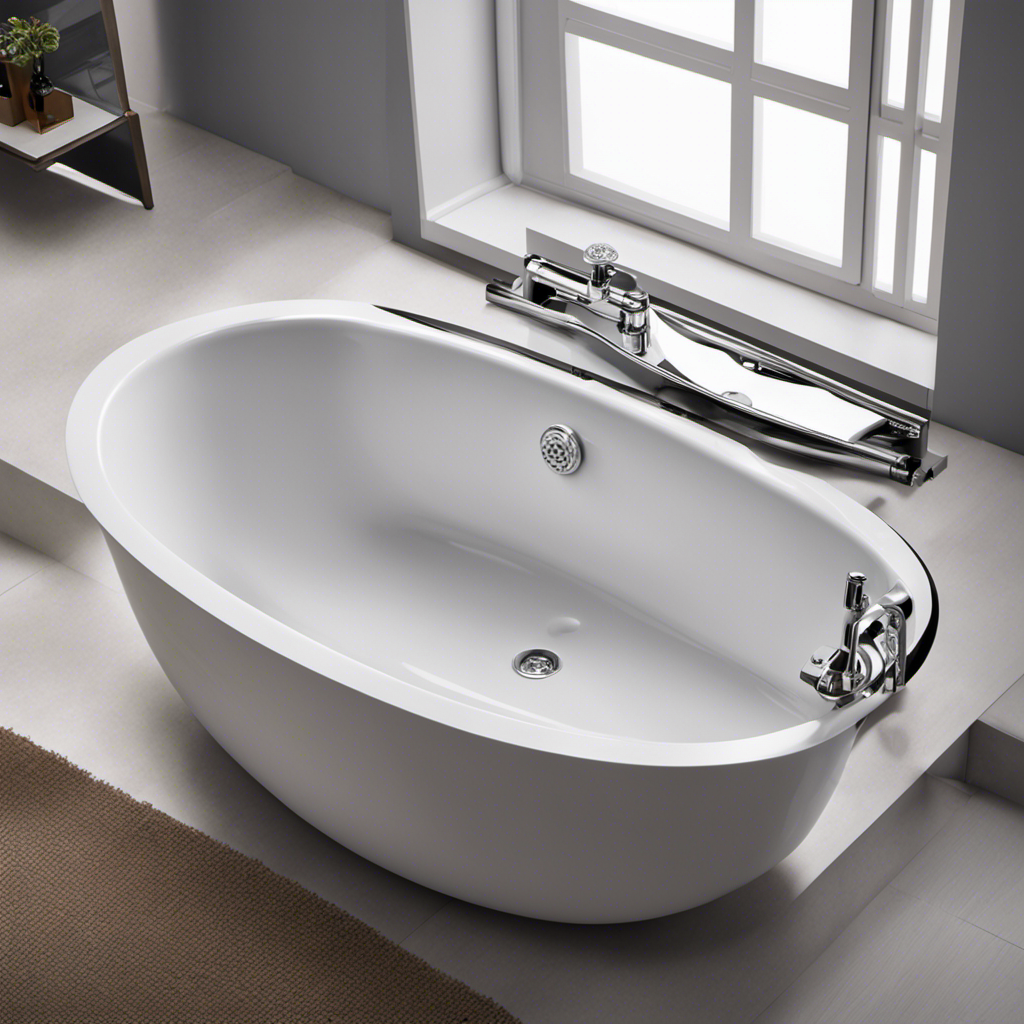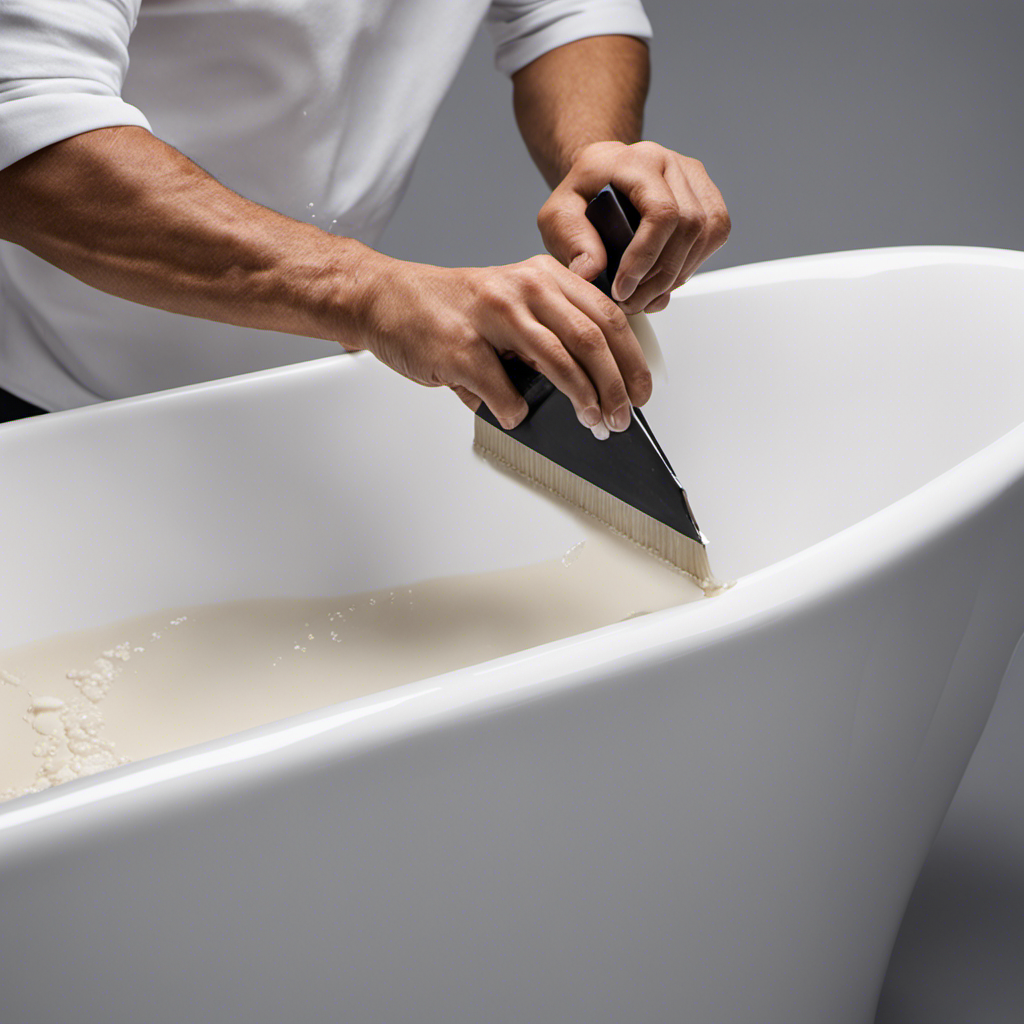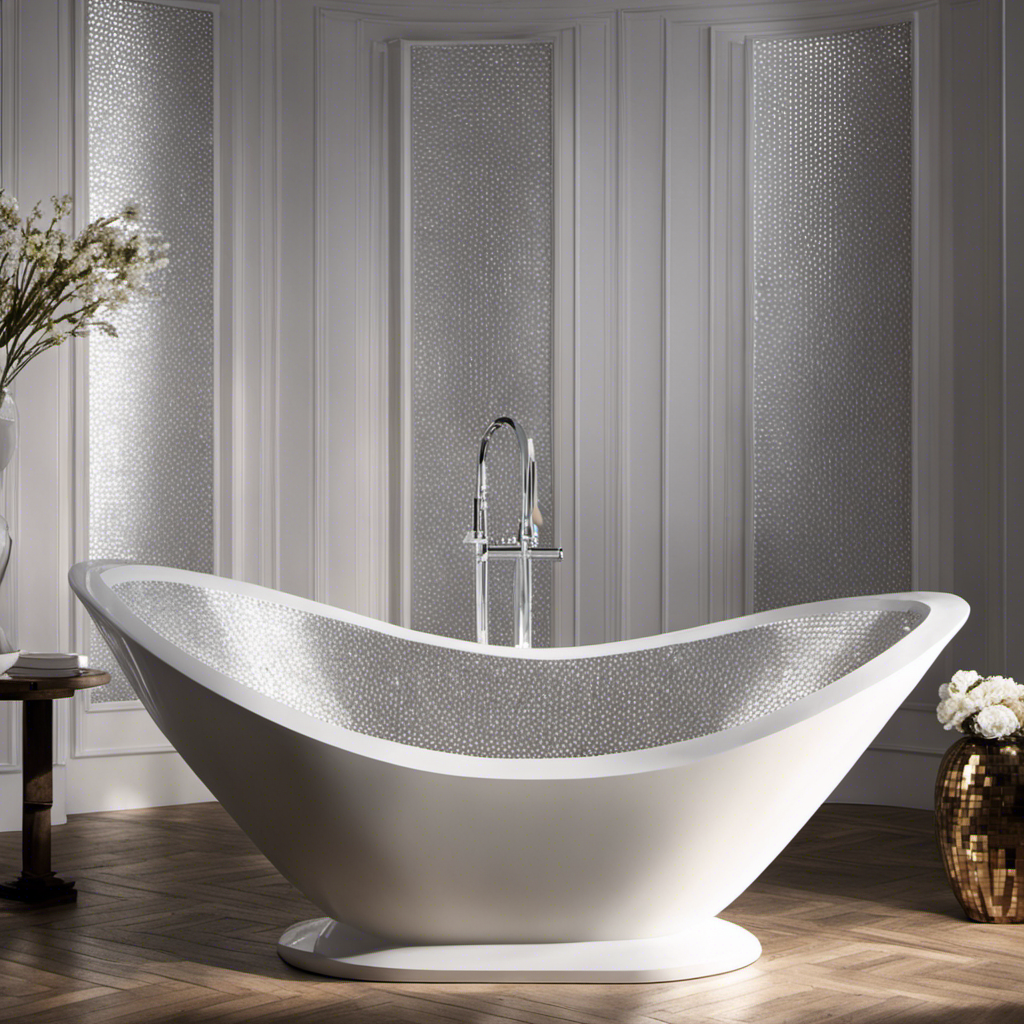Have you ever wondered about the inner workings of your bathtub drain? Well, let me shed some light on the subject.
When it comes to how bathtub drains work, it’s all about the intricate anatomy and precise mechanisms. From the moment you pull the plug, the water begins its swift journey down the drain, thanks to a clever system designed to ensure efficient drainage.
In this article, we’ll explore the different types of bathtub drain systems, common problems you may encounter, and valuable maintenance tips to keep your drains flowing smoothly.
So, let’s dive in!
Key Takeaways
- Bathtub drains are made of materials like stainless steel, brass, or PVC and their design has evolved to improve functionality and prevent clogs.
- The mechanism of water drainage in a bathtub involves the use of a stopper that allows water to flow out when lifted or rotated.
- Different types of bathtub drain systems include drain stoppers, overflow drains, and drain traps, each serving a specific purpose.
- Regular maintenance and care, such as using drain strainers and flushing the drain with hot water, can prevent common problems like clogged drains and slow drainage.
Anatomy of a Bathtub Drain
To understand how a bathtub drain works, you need to know the anatomy of it.
Bathtub drains are made using different materials, such as stainless steel, brass, or PVC. These materials are selected based on their durability, resistance to corrosion, and ease of installation.
The design of bathtub drains has evolved over time to improve functionality and prevent clogs. Traditionally, bathtub drains consisted of a simple stopper that could be lifted or pushed down to open or close the drain. However, modern bathtub drains often incorporate more advanced mechanisms, such as pop-up stoppers or trip lever drains, which allow for easier drainage and maintenance.
Additionally, there are now bathtub drains available with built-in hair catchers or strainers to prevent clogs caused by hair or debris.
Mechanism of Water Drainage
The mechanism of water drainage in a bathtub involves the use of a stopper that allows water to flow out. When the stopper is in the closed position, it creates a seal that prevents water from escaping. However, when the stopper is lifted or rotated, it opens up a pathway for the water to flow through the drain and out of the bathtub.
This flow of water is facilitated by the force of gravity, which pulls the water downwards. As the water flows out, it creates a suction effect that helps to clear any debris or dirt that may have accumulated in the drain. This gravity mechanism ensures that the water is efficiently drained from the bathtub, leaving it clean and ready for the next use.
Now that we understand the mechanism of water drainage, let’s explore the different types of bathtub drain systems.
Types of Bathtub Drain Systems
Understanding the different types of bathtub drain systems can help you choose the one that best suits your needs and preferences. Here are three key components to consider:
-
Drain stoppers: These are devices that prevent water from flowing out of the drain. They come in various forms, such as pop-up stoppers and twist-and-turn stoppers. Pop-up stoppers, for example, are commonly found in modern bathtub drains and are operated by a lever or knob.
-
Overflow drains: These drains are designed to prevent water from overflowing and causing damage. They are typically located near the top of the bathtub and are connected to a separate pipe. When water reaches a certain level, it flows into the overflow drain and is directed back into the main drain.
-
Drain traps: These are essential for preventing sewer gases from entering your bathroom. They are U-shaped pipes that hold a small amount of water, creating a barrier between the drainage system and your living space.
Understanding the different types of bathtub drain systems and their components is crucial for maintaining a functional and efficient drainage system.
Now, let’s explore some common problems with bathtub drains.
Common Problems With Bathtub Drains
If you’re experiencing slow drainage or water backup in your bathtub, it’s likely due to a clogged drain. Clogged drains are a common problem that can occur over time due to the accumulation of hair, soap scum, and other debris. When these substances build up in the drainpipe, they restrict the flow of water, resulting in slow draining or even complete blockage. To help you understand the common problems with bathtub drains, I have created a table below:
| Problem | Description |
|---|---|
| Clogged Drain | Accumulation of hair, soap scum, and debris in the drain. |
| Slow Draining | Water takes longer than usual to drain from the bathtub. |
Now that you understand the common problems with bathtub drains, let’s move on to the next section where I will provide maintenance and care tips to prevent these issues and keep your bathtub drain working efficiently.
Maintenance and Care Tips for Bathtub Drains
To prevent clogs and ensure optimal drainage, it’s important to regularly clean and maintain your bathtub drain. Here are three essential cleaning techniques to help you keep your drain clear and prevent clogs:
-
Use a drain strainer: Installing a drain strainer over your bathtub drain can help catch hair, soap scum, and other debris before it goes down the drain. This simple tool is easy to clean and can significantly reduce the risk of clogs.
-
Regularly flush with hot water: Once a week, pour a kettle of boiling water down your drain to flush away any buildup. Hot water helps dissolve soap residue and other substances that can accumulate in the pipes and cause clogs.
-
Use natural remedies: Instead of relying on harsh chemicals, try using natural cleaning solutions like baking soda and vinegar. Pour half a cup of baking soda followed by half a cup of vinegar down the drain. Let it sit for 10 minutes, then flush with hot water. This combination can help break down clogs and keep your drain flowing smoothly.
Conclusion
So there you have it, folks! The intricate world of bathtub drains, unraveled before your very eyes.
Who knew that such a seemingly simple mechanism could hold so many secrets? From the anatomy of the drain to the various types of systems, we’ve covered it all.
And let’s not forget the common problems and maintenance tips, because taking care of your drain is crucial in the grand scheme of things.
So next time you take a relaxing soak, remember to give a nod to the unsung hero of the bathroom – the bathtub drain.










